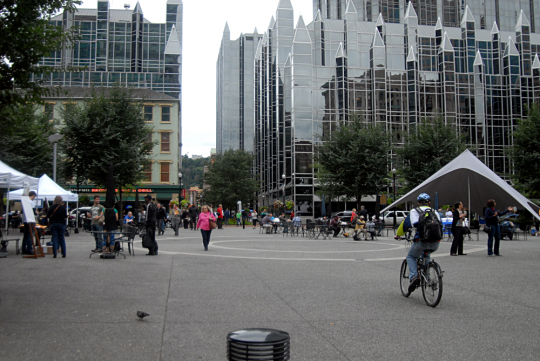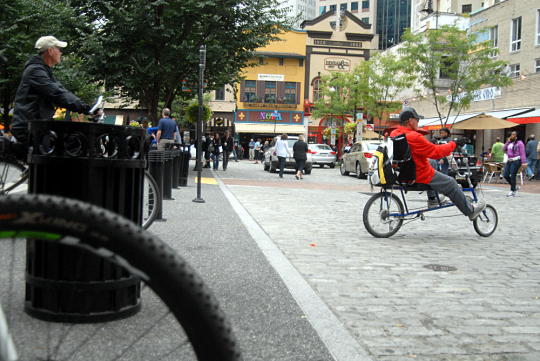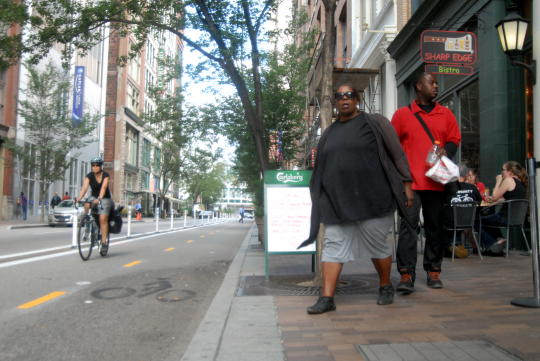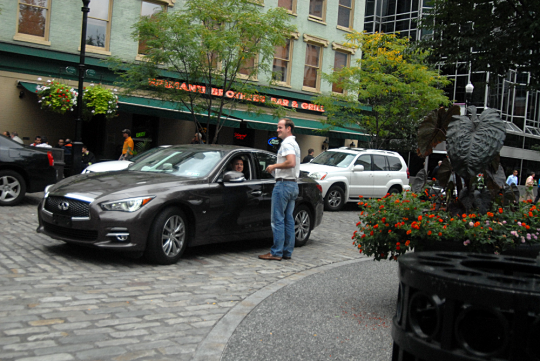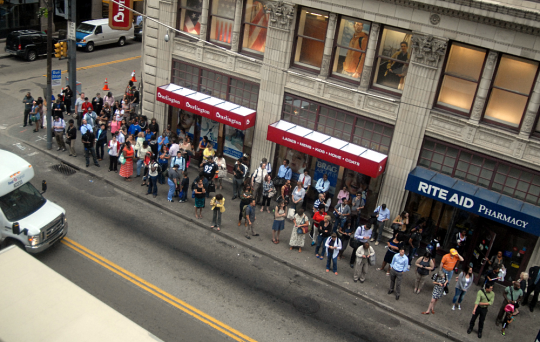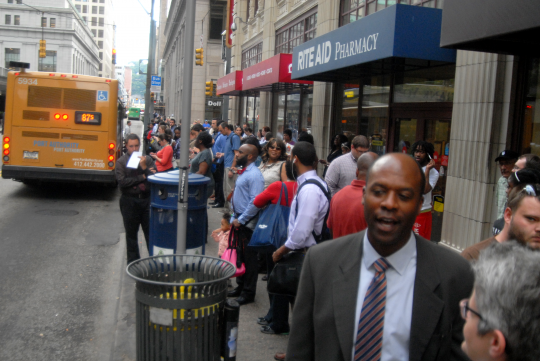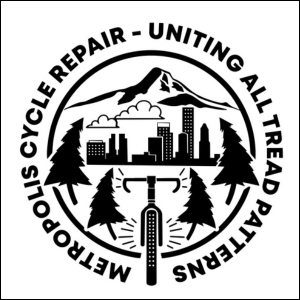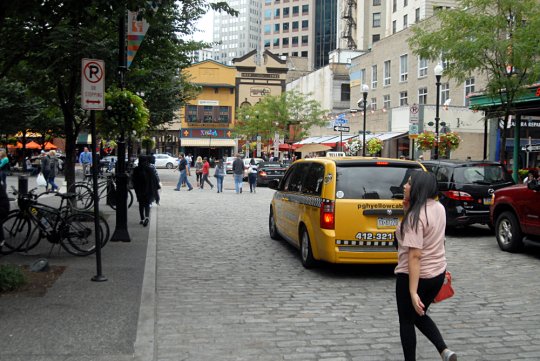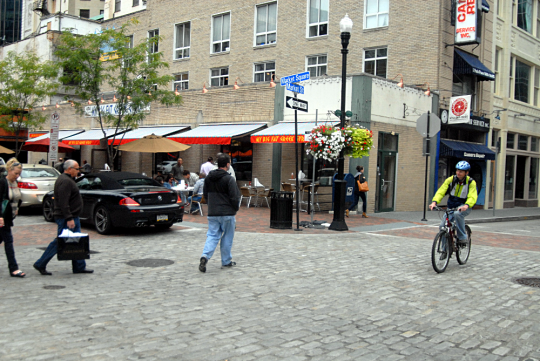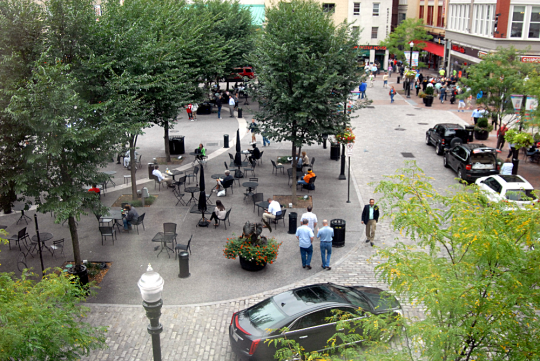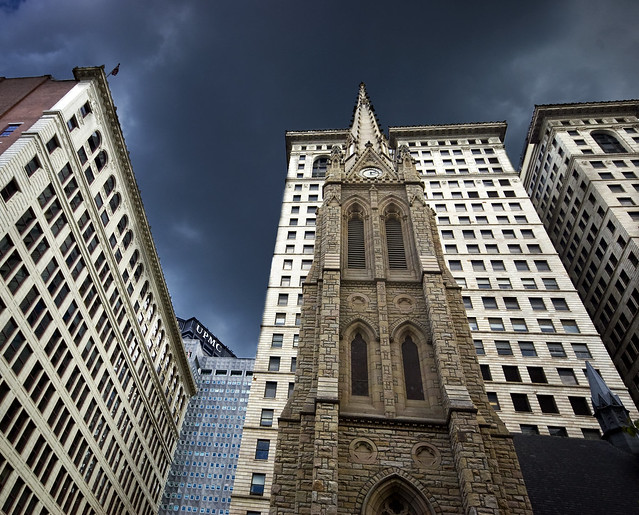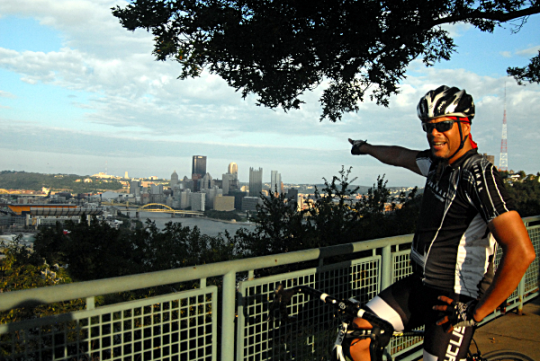When I headed to Pittsburgh last week to join the Pro Walk/Pro Bike/Pro Place conference for my other gig, I was telling people that “the Paris of Appalachia” (as its mayor likes to call it) is the city that my hometown, Toledo, Ohio, wishes it could be.
Three days later, I started telling people it was the city that Portland wishes it could be, too.
Pittsburgh obviously isn’t as bikeable as Portland, though it’s coming along. But almost everything else about the city measures up.
It’s young: the median Pittsburgher is 33 years old, compared to 37 for Portland and 37 nationally.
It’s educated: 19 percent of Pittsburghers have a graduate degree, compared to 18 percent of Portlanders and 11 percent of Americans.
It’s attractive: 9 percent of Pittsburghers moved to their county in the last year, compared to 10 percent of Portlanders.
It’s fairly diverse: 67 percent white, 25 percent Black, 5 percent Asian, 3 percent Latino, 3 percent multiracial compared to Portland’s 79 percent white, 6 percent Black, 7 percent Asian, 9 percent Latino, 4 percent multiracial.
It’s affordable: as of 2012, median rent including utilities was $755 a month to Portland’s $905.
Like Portland, it’s doing fine to well economically: metro-area unemployment is 5.8 percent, compared to Portland’s 6.3 percent and the country’s 6.5 percent.
And maybe most of all, it’s alive:
Wondering what’s going on in that last shot? Here’s a hint: look at the little blue sign in the upper left.
At the bus stops of downtown Pittsburgh, it’s like Hurricane Sandy every evening.
The downtown is fed by 82 separate bus lines, plus a light rail subway. Here’s what the scene above looks like at street level:
Advertisement
Some of the photos above are from Market Square, one of the most pleasant and unique public plazas I’ve seen in the United States. Thanks to cobblestone streets and other traffic calming, it creates a loop of honest-to-god shared space in the heart of downtown Pittsburgh surrounding their equivalent of Pioneer Courthouse Square — and as a result their square is part of the city in a way that ours, nice though it is, has never really been. Instead it had elements of two of my favorite Portland places: Colonel Summers Park and inner Hawthorne’s Cartopia food carts.
Why are Pittsburgh’s streets so lively? Mostly because downtown Pittsburgh is very, very dense. With the notable exception of the buildings immediately ringing Market Square, almost every block has a building that’s 15 stories or taller, often even higher. One day last week, I walked past a row of checkered yellow cabs that said “NYC.” They were props for a movie shoot; Pittsburgh was starring as Manhattan.
Here’s a photo by Adam Sacco that captures it better than anything I took. He could have been looking up from almost anywhere in the downtown core.
Oakland, the university district up the hill from downtown, serves some of the social function that Northwest 23rd does in Portland ‐ except it’s more than twice as tall, with lots of buildings reaching six or eight stories:
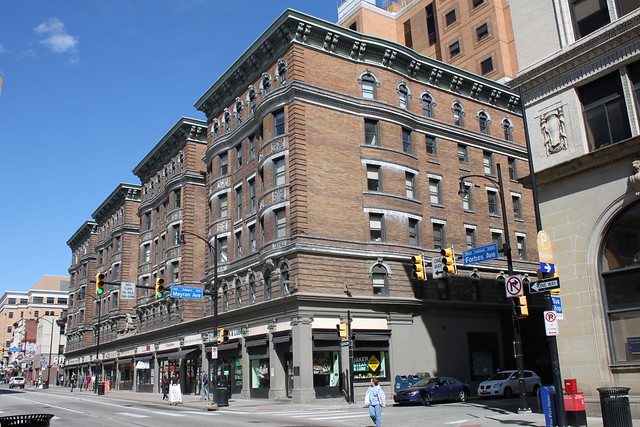
One of the reasons Pittsburgh is tall is that its rivers and hills form a sort of natural urban growth boundary for its downtown. (We’ve done that too, except one our rivers is Interstate 405.) Here’s what the city looks like from above:
But the bigger reason is that Pittsburgh’s big economic boom came between 1890 and 1930, when Pittsburgh was briefly the 10th largest city in the United States — and before the country buried its streetcar tracks, pushed biking and walking off the streets and passed laws that made dense development dramatically more expensive.
Some of those were laws that lots of BikePortland readers love to hate, like parking minimums and “level of service” congestion standards. But other laws are ones city-lovers generally support: disability access standards, storm drainage rules, prevailing-wage requirements.
Pittsburgh is successful today in part because its prewar boom was followed by a catastrophic economic collapse. Can Portland have the good without the bad?
Today, all of those rules have combined to make it much cheaper to build new homes and offices on the outskirts of Hillsboro than in the middle of Portland. That’s not to say that all those rules are bad. But they come at a cost: in higher rents (because central Portland isn’t adding enough new buildings to keep up with demand), in longer commutes and in fewer social interactions.
Pittsburgh doesn’t have as many of these problems … because after 1950, it went into a catastrophic economic collapse. Its population peaked around 700,000, a little larger than Portland’s today, and has never recovered. Though the city’s economy is healthy again, its population is now in the low 300,000s.
Pittsburgh is no more a paradise than Portland is. As Portlander Jamaal Green reminded me when I was singing the city’s praises to him, we can joke about the side benefits of an economic catastrophe but that’s cold comfort to two generations of Pittsburghers whose lives were devastated by it.
Will Portland ever achieve the human-friendly development and affordability that Pittsburgh was able to build in the years before Americans started building cities for cars instead of people? Just as importantly, can we do it without an economic collapse?
I think we can — because if you stand back far enough, cock your head to one side and squint, that’s the direction Portland has been heading. What’s unclear today is whether it’ll decide to continue.
— The Real Estate Beat is a regular column. You can sign up to get an email of Real Estate Beat posts (and nothing else) here, or read past installments here. This sponsorship has opened up and we’re looking for our next partner. If interested, please call Jonathan at (503) 706-8804.

